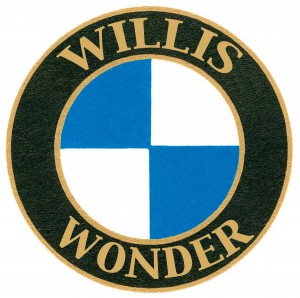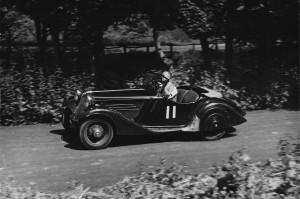 Names such as Jim Hall, Max Balchowsky, Colin Chapman, and Bruce McLaren bring to mind men who made their reputations beating the “Big Boys” at the racing game with only their wits, determination, and fabrication skills. I would suggest that we consider adding the name of Ron C. Willis to that list.
Names such as Jim Hall, Max Balchowsky, Colin Chapman, and Bruce McLaren bring to mind men who made their reputations beating the “Big Boys” at the racing game with only their wits, determination, and fabrication skills. I would suggest that we consider adding the name of Ron C. Willis to that list.
In the spring of 1934 BMW introduced their new roadster, the 315/1. The car, designed by Peter Szymanowski, was a sleek 2 seater with a long hood housing a 1,490 cc straight 6 putting out 40 bhp, mated to a 4 speed transmission. The car was light and nimble, with a stiff tubular chassis, rack and pinion steering, hydraulic shocks, and large drum brakes, and was capable of a top speed of 120 kph (75 mph). BMW realized they had a serious contender in the 1’500 cc classes of competition, and so the car was immediately entered into several international competitions.
The Alpine Trial was one of the most arduous and difficult competitions of the year. It covered 1900 miles through five countries over some of the most challenging mountain roads in Europe. To finish at all was a victory, and to finish without any penalty points was almost unheard of.
For the 1934 edition of this event BMW entered a team of three of their newly designed 315/1 roadsters to compete in the under 1,500 cc class against the perennial winners from Frazer-Nash. By the end of the event the BMW team won the Alpine Cup having scored no penalty points.
Denis Jenkinson, in his book From Chain Drive to Turbocharger wrote of their performance, “The BMWs were not only faster up the mountains, but were faster down the other side as well.” The performance of these cars in the Alpine Trial so impressed J.H. Aldington of Frazer-Nash that he decided to seek a contract with BMW to begin importing the cars into Britain, offering them and later BMW models in slightly Anglicized form under the name Frazer-Nash BMW.
A 315/1 with chassis number 51203 was in the last group of 14 cars imported to Britain before the war in 1936. Registered as ANP 904, it was sold originally to Mr. B. L. Bonner of Reigate. It languished until after the war, when it was purchased in 1946 by a garage owner and budding race car builder named Ron C. Willis.

Willis recognized the superior performance capabilities of the car and began to race it in trials, sprints and hill climbs in its stock form. However, he was not satisfied with the car’s stock performance and so he began a program of modifying the car to make it more competative. Thus began the evolution of 51203 into one of the quickest post-war Formula Twos in England.
The initial set of modifications were aimed at lightening the car and improving its aerodynamics. He began by moving the headlights from the wings to an inset position in the bottom of the radiator. This was followed by replacing the stock steel fenders with alloy cycle fenders. Another change he made was to replace the full width windscreen with a more aerodynamic double screen.
